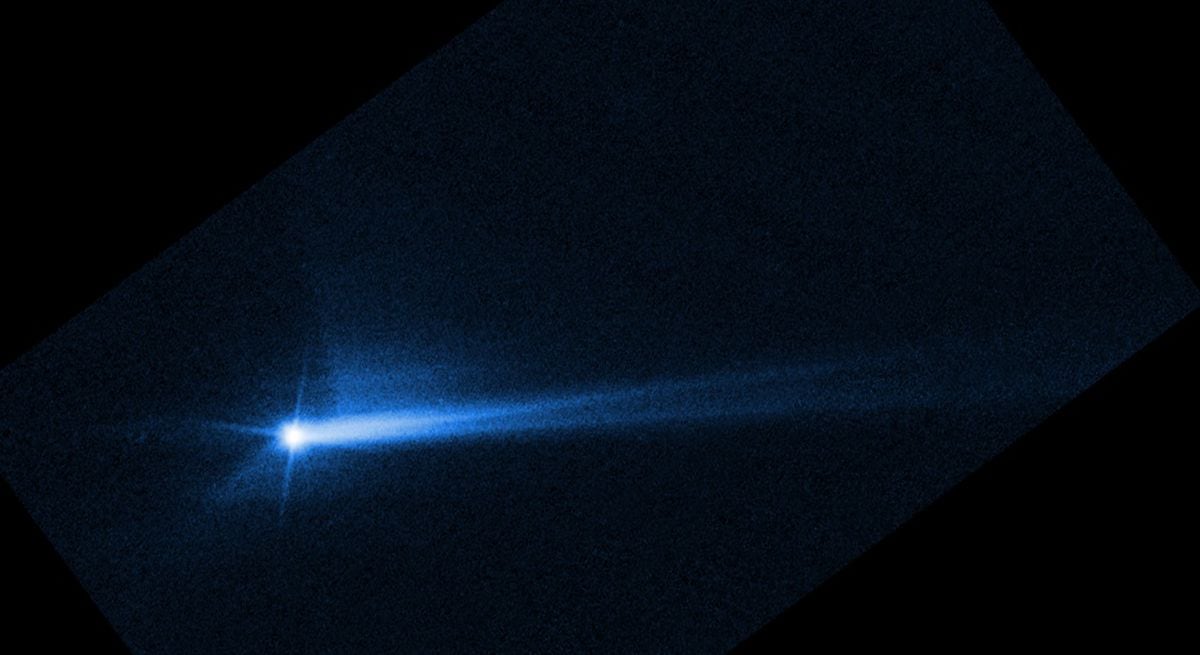The first attempt by humanity to deflect an asteroid has been successful, as confirmed today by those responsible for the DART mission, led by the US space agency (NASA).
The small robotic probe that hit Dimorfo about 11 million kilometers from Earth has managed to change its course considerably, according to several scientists from the project today at a press conference held in Washington.
"The team has confirmed that Dimorphs' orbit has shortened by 32 minutes," said NASA Administrator Bill Nelson.
Giorgio Saccoccia, president of the Italian Space Agency, which contributed the LICIACube satellite that recorded the before and after of the collision, explained: "This is something to be proud of as an international project."
After this project "we can say that we are somewhat safer from dangerous asteroids", he added.
On September 27, the DART probe - the size of a refrigerator and with a mass of about 600 kilos - hit Dimorpho, an asteroid about 10 million times larger.
It was the first dress rehearsal with which NASA's Planetary Protection Office wants to learn how to deflect future asteroids over 140 meters in diameter, which could destroy an entire city if they hit our planet.
The mission has been a resounding success, as it has managed to slow down Dimorfo considerably.
This 160-meter-diameter body was chosen because it orbits like a moon around Didymus, another asteroid with a diameter of 780 meters.
Under normal conditions, Dimorpho completed an orbit around its companion every 11 hours and 55 minutes.
After impacting head-on and at about 22,000 kilometers per hour against its target, DART reduced that period by 32 minutes.
This means that Dimorfo has also approached his brother by about 35 meters.
Last year, the science team determined that if DART shortened Dimorph's orbit by 73 seconds or more, the mission would already be a success, although the hope was to slow it down by about 10 minutes.
The Dimorphic asteroid imaged by the DART probe 11 seconds before impact.NASA/Johns Hopkins APL
Tom Statler, NASA's DART chief scientist, has said the team will continue to work to learn more about the asteroid's composition and the effects of the impact with which to begin designing an Earth-wide planetary defense system.
Currently, 95% of all asteroids larger than one kilometer in diameter have been discovered;
capable of causing a planetary catastrophe similar to the one that caused the extinction of the dinosaurs 66 million years ago.
Bodies over 140 meters like Dimorfo are much more worrying, because only 40% have been located.
In 2017, NASA decided to spend around 325 million euros to make the DART mission a reality.
With it, they wanted to perfect the current computer models so that in the future humanity can deal with dangerous rocks by hitting them with a custom-made probe.
The collision of this small probe happened on September 26 and was followed almost directly from Earth.
The last images sent by the DART cameras before hitting Dimorfo revealed that its surface was very irregular and rocky.
This seemed to indicate that this body is what astrophysicists call "a debris pile";
a mass of rocks and dust with little density.
This implied that despite its small size, the impact would raise a cloud of material that should be able to be observed by dozens of ground-based telescopes that followed the evolution of the shock.
So it was.
like a comet
Two days after the impact, Chile's SOAR telescope pointed at Dimorfo and confirmed that the impact had transformed it into a kind of comet.
The trail of dust raised by the impact formed a tail about 10,000 kilometers long, which confirms that the asteroid is very sparse.
René Duffard, a researcher at the Andalusian Institute of Astrophysics and scientific collaborator of DART, explains: "Dimorfo is like a pool of balls held together by gravity."
“The impact has created a seismic wave throughout the asteroid, which has behaved more like a fluid than a solid rock;
that's why that huge queue has formed, ”he details.
According to the observations of the scientific team, this tail is made only of dust, without traces of water, which differentiates it from comets.
The success of DART is the first step towards a planetary protection system.
The data collected by the probe and its companion LICIACube, a small satellite that witnessed the moments before and after the impact, as well as all the observations from ground-based telescopes, will help perfect the models that simulate possible impacts depending on the type of asteroid.
In 2026, the European Space Agency's Hera probe will arrive in the Dimorpho-Didimus system to accurately measure the mass, composition and internal structure of these two asteroids and carry out a detailed three-dimensional reconstruction of the crater left by DART.
The next step would be to already have a reliable model capable of determining what type of probe could deflect a future threatening asteroid based on its size and mass and the time available before it hits Earth.
In 2026, the US plans to launch the NEO telescope into space, which will make a catalog of asteroids and comets over 140 meters in diameter.
This instrument will have infrared vision, which will make it possible to detect bodies approaching from the direction of the Sun, which are difficult for conventional telescopes to locate.
You can follow
MATERIA
on
,
and
, or sign up here to receive
our weekly newsletter
.

